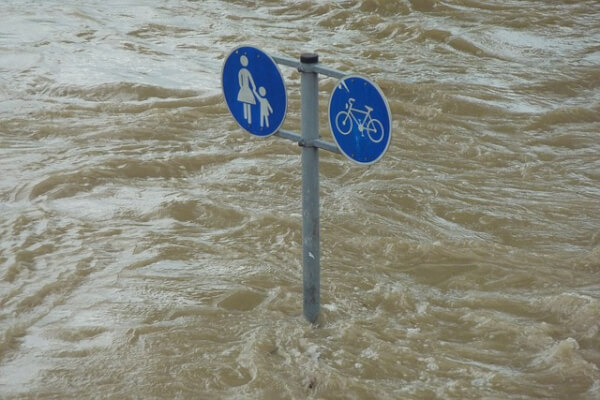Stay home – the latest response to coronavirus emergency
This has been a dramatic week, with my emotions ranging from confusion and concern to frustration and shake-your-head disbelief as we figure out how to manage as we head into our second week of “stay home.”
You may be coming under that order too, if you haven’t already. So, some input to consider while you figure out how to change your habits.
“Stay Home” has generated some interesting and varied calls and emails from family and colleagues, telling me what THEY are doing. Sharing some of the highlights might make interesting even if disconnected reading.
Besides, I know you are probably home looking for things to do!
So here goes.
Seven Stay Home Questions and Answers — one of my favorite formats.
Q1. (This is for the kids.) Why is soap called the virus ANNIHILATOR?
A. Because .. well, because oil doesn’t mix with water! Wait a minute. What’s the whole story?
Q2. Where does the word “Quarantine” come from?
Direct quote from the CDC website:
The practice of quarantine, as we know it, began during the 14th century in an effort to protect coastal cities from plague epidemics. Ships arriving in Venice from infected ports were required to sit at anchor for 40 days before landing. This practice, called quarantine, was derived from the Italian words quaranta giorni which mean 40 days.
(The picture below is NOT from the CDC. I found it myself. I think it’s a pretty good image that suggests a 14th century Carrack.)

Q3. How can I entertain my kids and myself while we are stuck at home?
A. So many good ideas out there, and they are multiplying rapidly! Here are just two that I’ve seen (and I’m not looking hard because I don’t have kids at home!):
- Take a virtual tour of a world famous museum https://www.travelandleisure.com/attractions/museums-galleries/museums-with-virtual-tours?
- Make hardtack, traditional survival food for sailors and soldiers – food that lasts for years and is perfect as emergency supplies in Go-Bags. https://urbansurvivalsite.com/make-your-own-hardtack/
Q4. Entertainment doesn’t work for me. I need to make some money. Any ideas?
A. Maybe now’s the time to consider an at-home job. Here are some online jobs that might be worth following up. Before you do, though, click to get a copy of “Do you have what it takes?”, an entrepreneur’s checklist from our company, The Marketing Machine®. Spend some serious time assessing your strengths and weaknesses, your accomplishments and failures. Any new business takes guts, organizing ability and follow-through.
- Podcast transcriber
- Website builder (Be sure you set the terms and scope so you don’t get pulled into a job you’re not able to manage.)
- Graphic designer (Same comment as above.)
- Editor/proofreader (Check Carol Tice’s various courses and blogs.)
- Online tutor or coach (Maybe YouTube video lessons on how to play guitar?)
- PowerPoint designer
- Consulting on something you are an expert on
- Affiliate marketer (Have to figure out how to promote product and how to collect money.)
- Data entry (I have a friend who does data entry for medical practices. Boring but lucrative.)
- Grant writer (If you are talented.)
- Renter – rent out an extra bedroom
Q5. I really would like to do something for others, but being stuck at home makes that difficult. What are other people doing?
A. As everything shuts down tighter and tighter, options become limited. But here are a few suggestions.
- Make a commitment to phone a family member a day. Use WhatsApp
(video) for a better experience. (My grandkids live in Germany and I have received pictures and videos from their dad via WhatsApp every single day since they were born!) - Handwrite some long-overdue personal notes. Just thank people for what they have meant to you. A chance to practice your cursive.
- Can you widen your social circle via phone? Reach out to members of your church. Have your kids call members of their scout troop or sports teams.
- Start a community outreach project. Here we have just set up a Good Neighbor Check-In program – essentially a phone tree using volunteers to reach out to everyone in our senior community. The flyer just went out to our neighborhood yesterday. (I am working on a project write-up and will share all the details soon.)
- Give blood. It’s safe. It’s life-confirming. Call your local blood bank to get details.
Q6. If we’re going to stay home for weeks, how can we use this extended time most effectively?
A. For sure, don’t fall into the habit (that I am already tempted by) of staying up late and sleeping late! Use a white board to set up a family calendar and block out times to work on specific projects. Here are a couple of projects to keep you engaged and also improve your overall level of preparedness.
- Document your personal property for insurance. I’m talking photos and videos of every room, every drawer, and every box in the closet. Figure out how to label your records so they can be retrieved. If you are considering this project, start here for a good overview: https://home.howstuffworks.com/real-estate/buying-home/create-household-inventory-for-insurance1.htm
- Straighten and refresh all your emergency kits. Our latest books in the Q&A Mini-Series would be perfect guides for this project: Custom Go-Bags and Car Emergency Kit. If you have teenagers in the house, eager to get behind the wheel, the Car Emergency Kit questions and answers will open their eyes to things that I can guarantee they have never thought about!
- Start writing your OWN book! Now you have time to plan and really get started. (Set aside at least 2 hours a day of uninterrupted time to work on it. Once you are “in the groove,” writing comes more easily. But it’s impossible to make progress if you stop and start.)
Q7. I haven’t changed my emergency supplies inventory. Are there any new items we ought to consider given the coronavirus?
A. I’ve seen two that I would recommend. One is cheap and the other expensive.
First, a plastic face shield to protect against splashes and sprays. Some models are disposable and others reusable or replaceable. Here’s the link to a reasonably-priced visor that flips up for convenience. Link takes you to Amazon (where we are affiliates, as you know).
Second, when a neighbor traded us 1 bottle of her mayonnaise for 2 rolls of our toilet paper, I was reminded of the wonder of bidets. My experience has been with European models (a separate bathroom fixture that probably costs upwards of $700) but there are also electrical bidet toilet seats and quite inexpensive mechanical toilet bidet attachments. Really, having a clean stream of warm water to clean your bottom sounds a lot better than scratchy toilet paper!
OK, enough of this miscellany. I hope you’ve found something of interest. Let us know what discoveries YOU are making as we work through this new experience . . .
Virginia
Your Emergency Plan Guide team
P.S. I have been working on a business series on “how to work remotely,” with input in particular from HR and business manager contacts. It’s been tough to focus on just one thing while we are ordered to stay home. I’ll start publishing that series here next week.















 “It’s just part of living here,” one of Hawaii’s residents is quoted as saying over the weekend. He wasn’t planning to evacuate from his home, even though fissures were opening in his neighborhood and lava flows from the Kilauea eruption on Friday were approaching. “I’ve been through this a dozen times.”
“It’s just part of living here,” one of Hawaii’s residents is quoted as saying over the weekend. He wasn’t planning to evacuate from his home, even though fissures were opening in his neighborhood and lava flows from the Kilauea eruption on Friday were approaching. “I’ve been through this a dozen times.” More resources for items on the list.
More resources for items on the list.